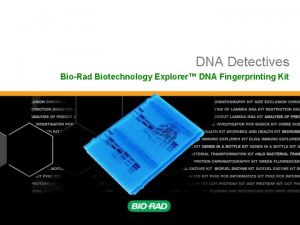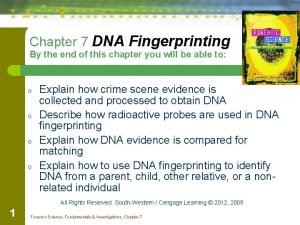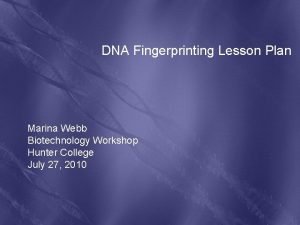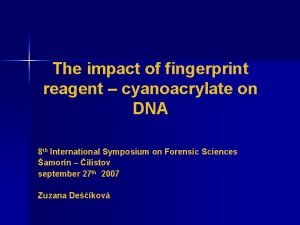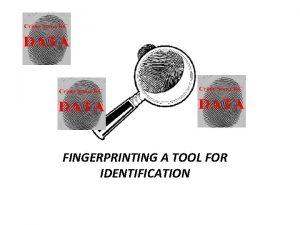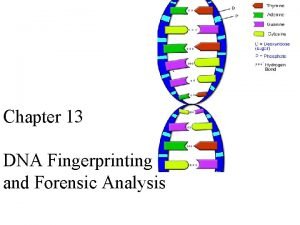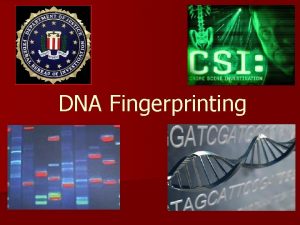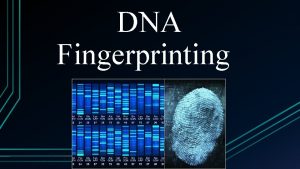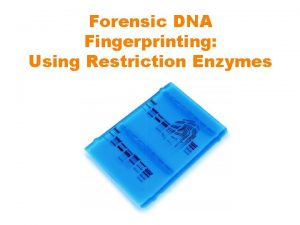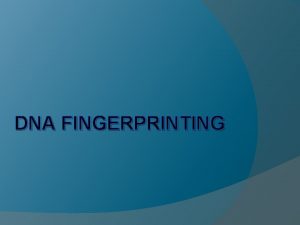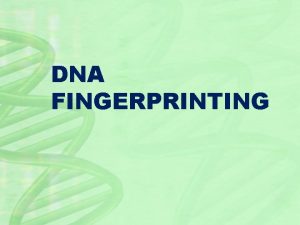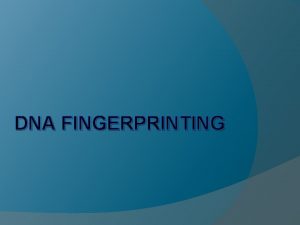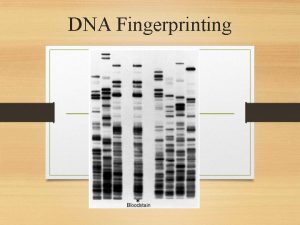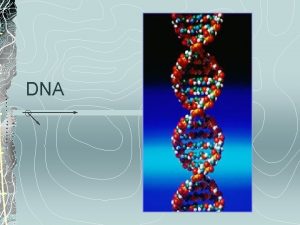DNA Fingerprinting Using DNA Analysis for Evolutionary Evidence











- Slides: 11

DNA Fingerprinting

Using DNA Analysis for Evolutionary Evidence u u All living things contain DNA… therefore we can use DNA as a tool to analyze how closely related two species are The more DNA segments two organisms have in common… the more closely related they are. – Often individual proteins are analyzed for their similarity u Ex. Hemoglobin

What is DNA Fingerprinting? • A technique used by scientists to distinguish between individuals of the same species using only samples of their DNA • DNA fingerprinting was invented by Alec Jeffreys in 1985. • There are 4 steps to this process

Step 1: Extract u DNA can be extracted from…. . – Any cell that has DNA u Blood, muscle, bone, other tissues

Step 2: Cut DNA u The DNA is cut into fragments using restriction enzymes. Each restriction enzyme cuts DNA at a specific base sequence. For example: GAATTC. Since this one is staggered it is called a sticky end!

Step 3: Separate DNA on a gel electrophoresis machine. u DNA fragments are injected into wells and an electric current is applied along the gel. DNA is negatively charged so it is attracted to the positive end of the gel. The shorter DNA fragments move faster than the longer fragments.

Gels after current has passed through them, producing different fragments of DNA.

Step 4: Analyze DNA u Bands of DNA are compared on the gel after electrophoresis is complete u Matching bands indicate common segments of DNA between the two samples analyzed – Same pieces of DNA cut by the same restriction enzyme u We will be using DNA fingerprinting to identify species and how closely related they are. It is most often used in forensic science and the analysis of crime scene evidence.

Was the suspect at the crime scene? Suspects Profile Blood sample from crime scene Victims profile

Is this man the father of the child? Mother Child Man

DNA Fingerprinting can solve crimes The pattern of the DNA profile is then compared with those of the victim and the suspect. u A match = suspect was present at crime scene. u Doesn’t match = suspect may be eliminated as a suspect. u The DNA profile of each individual is highly specific. u The chances of two people having exactly the same DNA profile is 30, 000 million to 1 (except for identical twins). u


